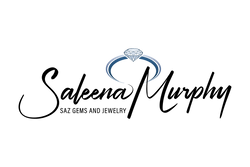Perfect doesn’t mean flawless, big, or extravagant. When it comes to buying a diamond, perfect means something different to everyone. Whatever your budget or style preferences are, this guide to diamond shopping will help you feel completely confident that you’ve found THE one that is right for you or your loved one.
The first steps in how to choose a diamond
1. Budget. The quickest way to narrow your search, and the first thing you should do is determine your budget range. Think about what you can afford to spend and choose a range around $500 to $1000. For example, $2,500-$3,000 or $9,000 to $10,000.
2. Choose the shape. Once you’ve landed on a budget range, the next step is to decide on a shape. There are lots of different shapes, some of the most popular are round, princess cut, oval, and emerald. Although there are several more.
Round Diamond

Princess Cut Diamond

Oval Diamond

Emerald Cut Diamond

3. Choose the quality. If you aren’t as familiar with diamonds, the characteristics that determine quality can be confusing. Thankfully, the GIA has a chart that makes this process easy-to-understand. There are four main aspects of diamond quality; these include weight, cut, clarity, and color. Let’s take a closer look at each of these.
4. Carat Weight is pretty straightforward. Diamonds typically range from .25 ct to 5 ct. For most people, more than two carats is out of their budget.
3. Cut Scale is based on seven factors: brightness, fire, scintillation, weight ratio, durability, polish and symmetry. Those may sound confusing but this chart by the GIA can help it make more sense. What you need to know about diamond cut scale is the ranges that these factors cause a diamond to fall under. They can be graded as: Excellent, Very Good, Good, Fair, or Poor. A lot easier huh? The grade you probably want to aim for is Very Good or Good.
4. Clarity Scale refers to the degree by which imperfections are present. Flawless means no inclusions or blemishes (these are quite rare). There are 10 other gradations for clarity. Again, we encourage you to refer to the GIA classification chart here to learn more about clarity.
5. Color Scale the last factor is the easiest to understand. Color ranges from colorless to light; less color means higher quality.
One of the most important aspects of shopping for a diamond is buying from a jeweler you can trust. Unfortunately, there are some generic jewelers out there who may not have your best interests in mind. Many of the factors mentioned above can only be verified by a certified gemologist who has the right tools and equipment. You should research the background and reviews of the jeweler before making any decisions.
Of course, SAZ can help you make a more informed decision. We have a diamond brokerage service and will walk you through the process and ensure you feel 100% confident that you found the perfect diamond for yourself or your loved one!

